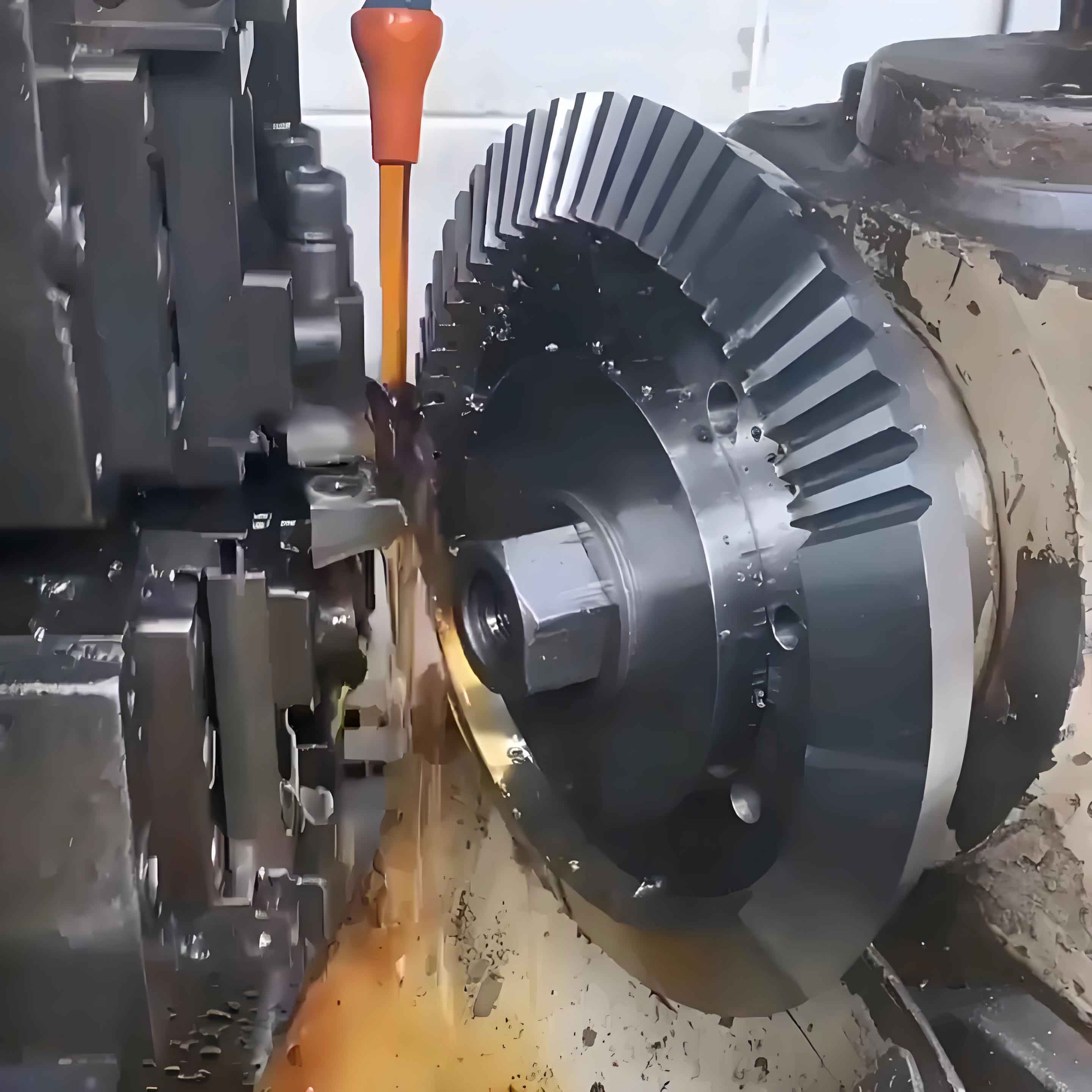Gear machining plays a pivotal role in modern mechanical systems, where surface roughness directly impacts fatigue life, noise, and wear resistance. My research focuses on optimizing hobbing parameters for 20CrMnTi alloy—a material widely used in automotive transmissions due to its high hardenability and impact toughness. Through systematic experiments, I investigated how tool geometry influences surface roughness, aiming to bridge gaps in existing literature that primarily addresses precision over texture quality.

Methodology for Surface Roughness Measurement
Accurate roughness assessment requires standardized measurement protocols. For gear machining, I evaluated two directional approaches: tooth profile direction (perpendicular to the tooth axis) and tooth trace direction (parallel to the tooth axis). Twenty 20CrMnTi workpieces were machined under identical conditions using a Y3150 hobbing machine. Roughness measurements (Rz) were taken at three critical points per tooth: tip, pitch circle, and root. Stylus profilometry (needle tracing) yielded the following data:
| Measurement Direction | Roughness Range (Rz, μm) | Mean Rz (μm) |
|---|---|---|
| Tooth Profile | 4.9527 – 6.1836 | 5.568 |
| Tooth Trace | 1.2461 – 1.8720 | 1.559 |
The tooth trace direction exhibited superior consistency and lower roughness values. This is attributed to reduced curvature-induced measurement errors at the tooth root. The linear relationship between directional measurements is expressed as:
$$ R_{z,\text{profile}} = 3.56 \cdot R_{z,\text{trace}} + 0.12 $$
Consequently, subsequent experiments adopted tooth trace measurements to ensure reliability.
Experimental Design for Gear Machining Optimization
All trials employed 20CrMnTi blanks (Ø80 mm × 25 mm) and A-grade HSS hobs (m = 2, α = 20°). Machine parameters were fixed at cutting speed vc = 35 m/min and feed f = 2.0 mm/rev. Three critical hob characteristics were isolated for study.
1. Influence of Hob Rake Face Roughness
Nine workpieces were divided into three groups machined with hobs having rake face roughness values of Ra = 3.2 μm, 1.6 μm, and 0.8 μm. Surface roughness results after gear machining:
| Workpiece Group | Hob Rake Face Ra (μm) | Mean Gear Rz (μm) |
|---|---|---|
| Group 1 | 3.2 | 5.472 ± 0.32 |
| Group 2 | 1.6 | 4.408 ± 0.41 |
| Group 3 | 0.8 | 2.869 ± 0.21 |
Lower hob rake face roughness directly improved gear surface quality. Smoother rake faces (0.8 μm Ra) reduced average Rz by 47.5% compared to 3.2 μm Ra. This occurs because a polished rake face minimizes friction and built-up edge formation during chip evacuation.
2. Effect of Hob Tip Radius
Tip radius (R) critically affects root surface quality and bending fatigue. Using zero-rake-angle hobs, I calculated R via:
$$ R = \frac{(S_a – 2h_a \cdot \tan\alpha_a) \cdot \cos\alpha_a}{2(1 – \sin\alpha_a)} $$
where Sa is hob pitch diameter tooth thickness, ha is hob addendum, and αa is pressure angle. Six workpieces were machined with hobs of R = 1.882 mm and R = 1.617 mm:
| Workpiece Set | Tip Radius R (mm) | Mean Gear Rz (μm) |
|---|---|---|
| Set A | 1.882 | 3.126 ± 0.45 |
| Set B | 1.617 | 5.003 ± 0.39 |
Larger tip radii produced smoother surfaces. However, excessive R risks transition interference. The optimal range for 20CrMnTi gear machining is 1.7–1.9 mm, balancing roughness reduction and geometric integrity.
3. Impact of Cutting Edge Preparation
Edge honing parameters significantly influence chip formation. Two hobs were prepared with edge radii of 50 μm and 10 μm. Ten workpieces were machined (five per hob):
| Hob Edge Radius (μm) | Mean Gear Rz (μm) | Standard Deviation |
|---|---|---|
| 50 | 2.927 | 0.48 |
| 10 | 4.466 | 0.67 |
Larger edge radii (50 μm) reduced Rz by 34.4% versus 10 μm edges. Honed edges distribute cutting forces evenly, suppressing micro-vibrations that amplify surface irregularities in gear machining processes.
Conclusions and Industrial Implications
This study establishes three pillars for optimizing surface roughness in 20CrMnTi gear machining:
- Hob Rake Face Quality: Surface roughness Ra ≤ 0.8 μm is critical for high-quality gear machining. Achievable via precision grinding or CVD coatings.
- Tip Radius Optimization: A radius of 1.882 mm maximizes surface quality without geometric compromise, calculated using the derived formula.
- Edge Preparation: 50 μm edge honing outperforms sharper edges by enhancing tool life and surface finish.
These findings provide actionable guidelines for manufacturers seeking to enhance gear performance in high-stress applications. Future work will investigate synergistic effects of combined parameters and their influence on fatigue life.
